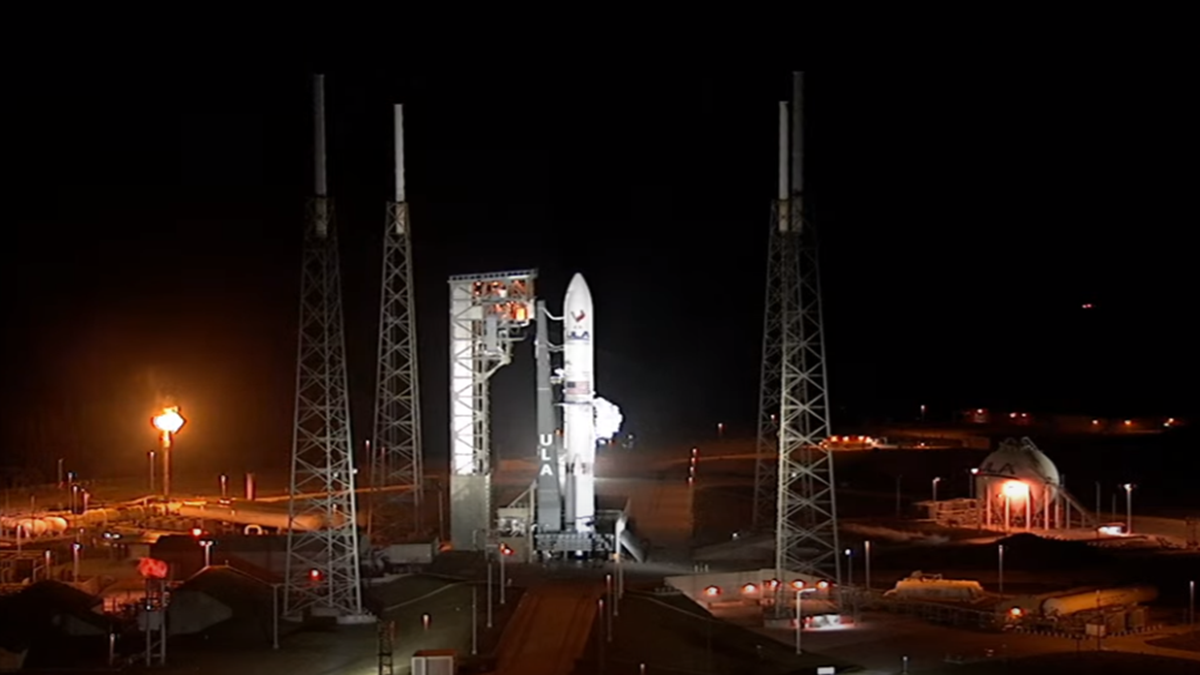First US Moon Lander Since Apollo: The Historic Peregrine Mission
Introduction to the Peregrine Mission
Almost half a century later, the U. This mission renews lunar space exploration but also signifies a new order of public-private partnership in outer space. Peregrine mission stands as an example of how human beings go beyond our planet in quest for knowledge and intellect.
Astrobotic: The Company Behind Peregrine
Astrobotic, an aerospace company headquartered in Pittsburgh is leading the way in this historical mission. Astrobotic is well-known for its innovative approach to space technology, and it had a role in building the Peregrine lander. The case of the company developing from a tiny startup to become one of prominent names in space identification evidences transformation and expansion, with number private organizations that are starting take over what used only have been preserved by governmental agencies.
Role of NASA’s CLPS Initiative
This mission is critical to the success of an initiative called Commercial Lunar Payload Services (CLPS) by NASA. CLPS seeks to capitalize on the capabilities of private organizations such as Astrobotic that can transport scientific equipment and other payloads into Moon. This partnership between NASA and the private sector opens a new page in space exploration, promoting innovation as well effectiveness.
Peregrine’s Scientific Objectives
The purpose of Peregrine is not merely to land on the Moon; it has a set at suite scientific instruments designed for solving lunar mysteries. The key objectives are to find the water molecules, determine radiation levels and analyse the thin layer of gases surrounding Moon’s surface. These experiments will yield important results about the environment of Moon and its interaction with solar radiation.
Launch Details and Timeline
Early Monday’s weather is favorable for the much-awaited launch of Peregrine. The main route from Earth to the Moon undergoes detailed planning; each phase of mission is vital for its success. Upon landing, Peregrine will embark on a series of scientific explorations in the Sinus Viscositatis region.
The Landing Site: Sinus Viscositatis
Peregrine is going to land at Sinus Viscositatis, also known as Bay of Stickiness. The mid-latitude region of the Moon gives a beautiful kind of landscape for scientific investigation. Future lunar missions and possible human settlements hinge on understanding its geology, environmental conditions.
Peregrine’s Payload: A Melting Pot of Experiments
Peregrine is not simply a spacecraft; it can carry various experiments and instruments. 20 experiments are included aboard, six of which are critical NASA instruments and a collection of international payloads. Each of the experiments is designed to address certain scientific queries, thereby enhancing our knowledge about Moon globally.
Cultural and Symbolic Payloads Aboard
In science and culture combined, Peregrine bears special loads such as the ashes of household names like Gene Roddenberry or Arthur C Clarke. These are symbolic touches that show how inextricably tied humanity is to space exploration and the wish to be part of this huge, unexplored territory.
Astrobotic’s Vision for Lunar Exploration
Astrobotic is one of the pioneers in space technology, and even though it has its eyes set on not only Peregrine mission may be a future where Moon becomes just another place to visit for both scientific or commercial actions. This vision stems from the notion that Moon – Earth’s closest celestial neighbor has yet to fully realize its potential for scientific exploration and economic gain. Astrobotic is involved in the Peregrine mission as an intermediary step towards establishing a sustainable lunar presence that has to precede more frequent and varied Moon missions. So, the company aims to illustrate that private entities can lead such big projects and be well-functioning.
The Technology Behind Peregrine
The Peregrine lander is an important innovation in the technology of spacecraft.
The lander is equipped with cutting-edge navigation systems, reliable communication abilities and advanced scientific instruments.
These characteristics not only help the Peregrine mission to succeed but also set a new bar for future lunar landers. Peregrine’s technological innovations embody the advancements in spacecraft technologies and improvements of lunar exploration devices.
Challenges and Risks of the Mission
Just like other space missions, Peregrine comes with its own set of challenges and risks. The primary issues include making sure that the lander reaches Mars safely and lands on its surface gently. This would include the negotiating of intricate gravitational fields, avoiding lunar obstructions and coping with the harsh environmental conditions of space cushioned against meteorites. Also, there are technical difficulties to ensure a constant connection with the Earth and proper operation of all instruments on board. Astrobotic has carefully planned to manage these risks, but the vagaries of space exploration always carry a degree of unpredictability.
Controversies Surrounding the Mission
The much-celebrated scientific and exploratory goals of the Peregrine mission have not been without controversy. One specific problem is how the Navajo Nation objects to their cultural artifacts and language being included without proper consultation. It brings up important issues about consent, representation and respect of cultural identity when engaging in global missions such as Peregrine.
Public Engagement and Education
The public engagement and education aspect of the Peregrine mission is strong. It is a mission to inspire the next generation of scientists, engineers and space enthusiasts through various outreach programs or partnerships. Mission aspects that are educational will include delivering live data and images, broadcasting important mission milestones through Live stream, and partner with Education Institutions. These efforts are designed to bring the excitement of space exploration closer to the public, fostering a deeper understanding and appreciation of the science behind the mission.
Global Collaboration in the Mission
It represents contributions and collaborations from diverse international partners, demonstrating the mission’s global dimensions. These partnerships do not only provide financial and technical support but a common vision towards lunar exploration. Countries and organizations worldwide are contributing their resources, expertise, intellects to unite in achieving the goal.
Financial dimensions of the Peregrine Mission
The financial environments of the Peregrine mission have an important place in its implementation and consequences. A critical review of the funding, budget and economic considerations gives an understanding on how cost-effective lunar missions would be or if they might actually result in a positive return on investment. The budget of the mission indicates that space exploration has entered into a new age where cost effective methods and involvement from private sector is defining how economic opportunities in space-related missions were transacted.
Environmental Considerations
The Peregrine mission has a real focus on environmental considerations, especially the impact it may have had upon such an otherwise pristinely clean environment as that of our Moon. The mission adheres to strict guidelines in an attempt of reducing as much its ecological footprint and fostering the sustainable exploration practice into space. This refers to appropriate timing in planning the lander’s trajectory, landing, and operation so as not to interfere with the lunar surface and its fragile exosphere. It is essential to employ sustainable exploration practices in the process of exploring Moon for maintaining its environment clean and habitable by future generations as well as missions.
Future of Lunar Exploration
The mission to Peregrine will yield significant results for lunar exploration in the future. It also paves the way for future missions both in terms of technological capabilities and private companies’ contributions to space exploration. Â It also paves the way for investigating how viable is Moon as a conduit to further space exploration.
Therefore, the Peregrine mission can be considered as one of the most important milestones in history of space exploration. It is the first moon lander American mission since Apollo era, spanning decades and reviving a passion to lunar exploration. Its legacy will not be just in terms of scientific achievements but also how much it has inspired, collaborated and forged the way to future missions. Reflecting back on the journey and success of Peregrine mission, we look forward to a new chapter in making discoveries about ourselves as humans navigating our way through space.
10 short FAQs with answers of above article: First US Moon Lander Since Apollo
1-What is the purpose of the Peregrine?
The US made its first lunar landing since the Apollo period with the Peregrine mission, a historic lunar exploration endeavor. The initiative is being led by Astrobotic and NASA to carry out a number of scientific studies on the moon.
2-Who is in charge of the Peregrine project?
The main firm driving the Peregrine project is Astrobotic, an aerospace company based in Pittsburgh, with a lot of help and support from NASA’s Commercial Lunar Payload Services (CLPS) program.
3-What are the Peregrine mission’s primary goals?
In order to learn more about the Moon’s environment, the mission will measure radiation levels, look into the lunar exosphere, examine lunar water molecules, and carry out a number of other scientific experiments.
4-What time did the Peregrine lander take off?
The Peregrine lander launch window and time are determined by the mission plan. The official announcements and updates from the mission contain the precise date.
5-On what part of the moon is the Peregrine lander landing?
The mid-latitude Sinus Viscositatis region of the Moon was selected for the lander’s landing site due to its distinct topography and scientific significance.
6-What distinguishes the Peregrine lander?
Because of its cutting-edge technology, varied payload of twenty distinct experiments, and involvement in the first US moon landing mission since the Apollo program, the Peregrine lander is exceptional.
7-What symbolic and cultural payloads is Peregrine carrying?
Peregrine carries cultural and symbolic objects in addition to scientific equipment, such as the cremated remains of well-known people and objects that represent the relationship between humans and space travel.
8-How do public outreach and education fit within the Peregrine mission?
The mission aims to educate and engage the public with space exploration through outreach activities, live streaming of significant achievements, and partnerships with educational institutions.
9-How does the Peregrine mission take the environment into account?
In order to limit its influence on the lunar environment and promote sustainable space exploration methods, the mission complies with stringent requirements.
10-What is the Peregrine mission’s legacy?
The scientific contributions made by the Peregrine project, the US’s resurgence of lunar exploration, and the establishment of a new benchmark for public-private collaborations in space missions are what make it legendary.
First US Moon Lander Since Apollo: The Historic Peregrine Mission
Also Read and watch: Tecno Pop 8 With 6.6-Inch HD+ Display: Price, Specifications


